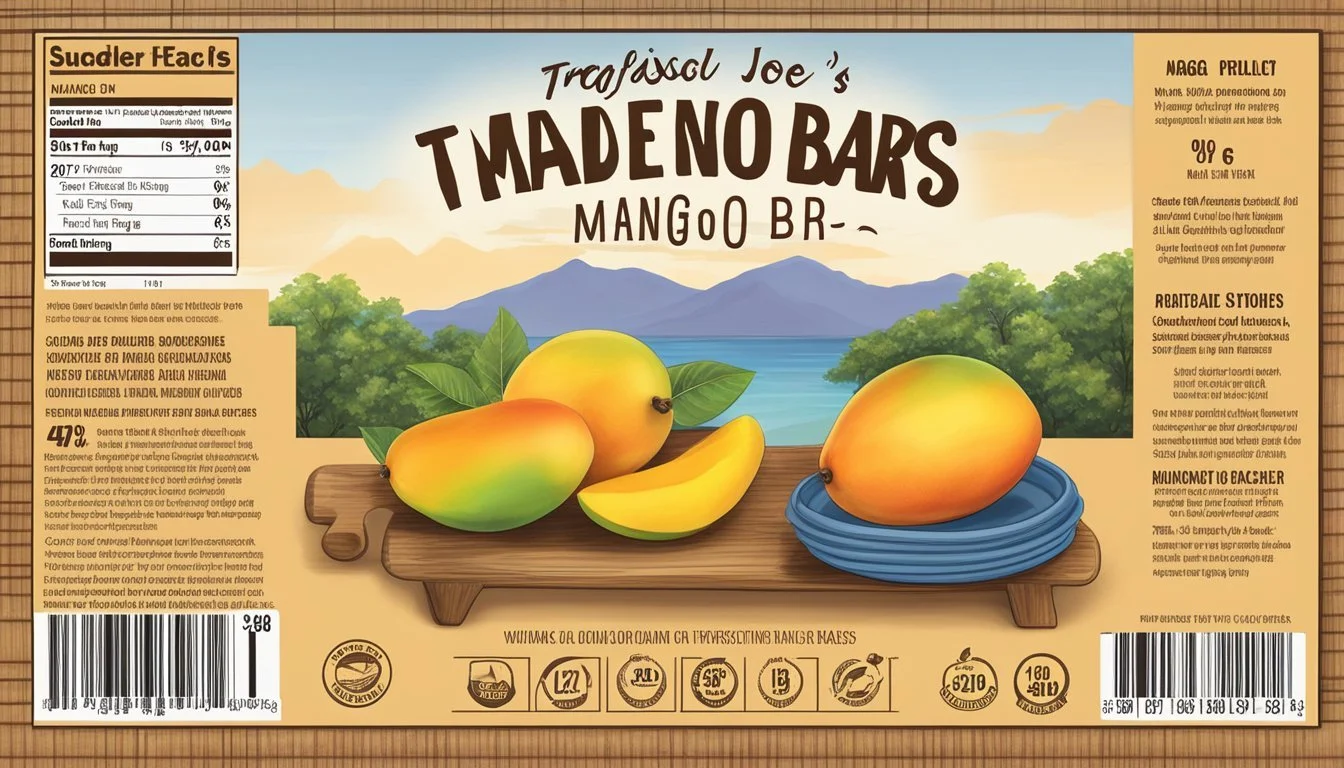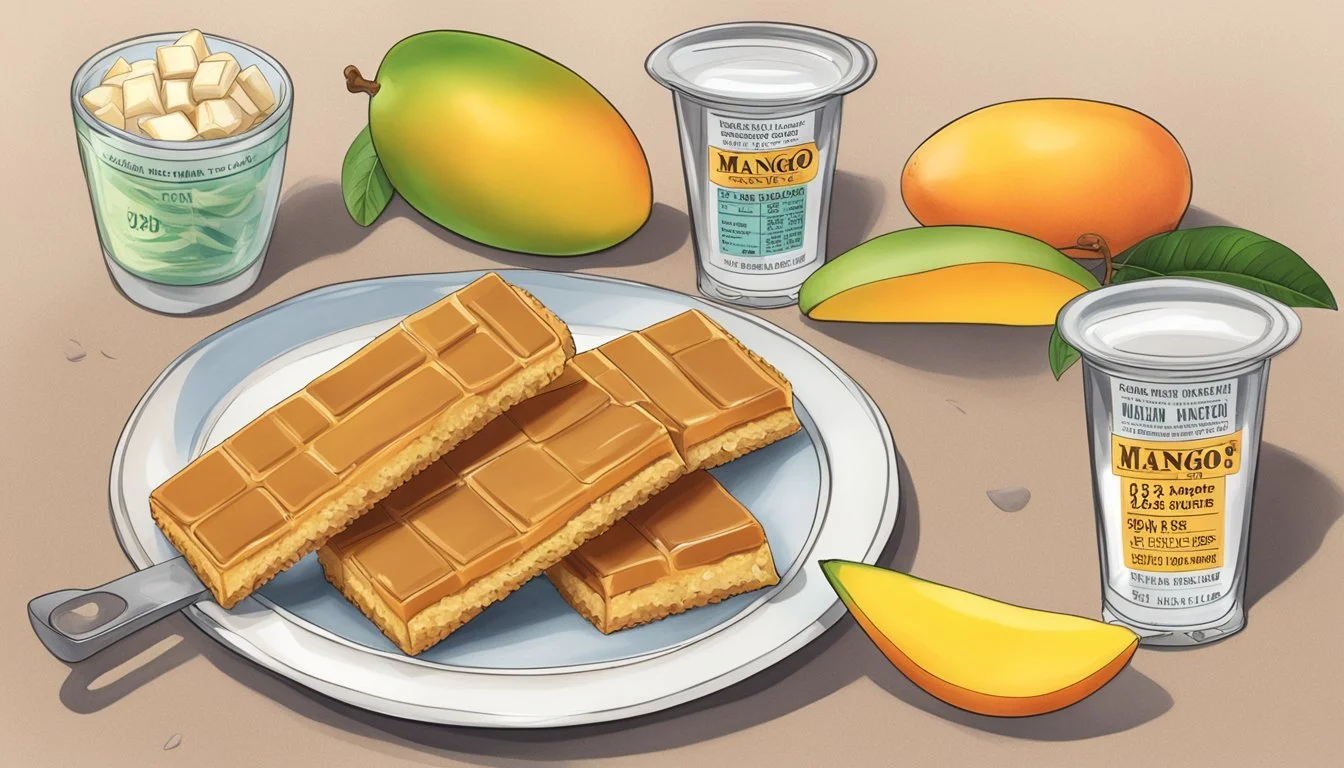Trader Joe's Mango Bars Nutrition Facts & More
A Refreshing Low-Calorie Summer Treat
Trader Joe's Mango Bars offer a refreshing and tropical treat for those seeking a sweet snack. These frozen desserts combine creamy textures with vibrant mango flavors, appealing to fruit lovers and ice cream enthusiasts alike.
A single Trader Joe's Mango & Cream Bar contains approximately 60 calories, making it a relatively low-calorie dessert option. The bars are gluten-free and certified kosher, catering to various dietary needs. For those tracking their nutritional intake, these bars provide a mix of carbohydrates, fats, and a small amount of protein.
The nutritional profile of Trader Joe's Mango Bars varies slightly depending on the specific product line. Some versions may contain more calories and macronutrients per serving. Food databases and calorie counters can provide detailed information for those seeking precise nutritional data. Trader Joe's packaging also includes nutritional facts to help consumers make informed choices about their snack selections.
Nutrition Facts Overview
Trader Joe's mango bars offer a refreshing treat with varying nutritional profiles depending on the specific product. The bars contain a mix of macronutrients and micronutrients, with differences in calorie content and nutritional value across the product line.
Calories and Macronutrients
The calorie content of Trader Joe's mango bars ranges from 60 to 90 calories per bar. The Mango & Cream Bars contain 60 calories each, while the Organic Mango Fruit Bar has 90 calories per serving.
Carbohydrates make up the majority of the macronutrient content in these bars. The Mango & Cream Bars provide approximately 9-10g of carbs per bar. Sugars account for a portion of the carbohydrate content, with the Organic Mango Fruit Bar containing 6g of sugars.
Fat content is generally low, with most varieties containing 0-2g of total fat per serving. Protein content is minimal, typically ranging from 0-1g per bar.
Vitamins and Minerals
Trader Joe's mango bars offer some vitamins and minerals, contributing to their nutritional value. The Organic Mango Fruit Bar is a good source of vitamin A, providing 39% of the daily value per serving.
Vitamin C is present in these bars, with the Organic Mango Fruit Bar offering 12% of the daily value. This vitamin supports immune function and acts as an antioxidant.
Iron content varies, with some bars providing up to 6% of the daily value. Calcium levels are generally low or negligible in these products.
Potassium and sodium content are typically not significant in Trader Joe's mango bars. The bars are generally low in cholesterol and do not contain trans fats.
Health and Diet
Trader Joe's Mango Bars offer a refreshing treat with some nutritional benefits. These frozen desserts provide a balance of carbohydrates and minimal fat content while containing natural fruit sugars.
Nutrient Balance and RDI
Trader Joe's Mango Bars contain approximately 60-90 calories per serving, depending on the specific variety. The bars provide a moderate amount of carbohydrates, primarily from natural fruit sugars.
Fiber content is around 2 grams per bar, contributing to 7% of the recommended daily intake. This aids in digestion and helps promote feelings of fullness.
The bars contain minimal fat and protein. They offer small amounts of potassium and iron, with each bar providing about 4% and 2% of the daily value, respectively.
Dietary Recommendations
Trader Joe's Mango Bars can be incorporated into a balanced diet as an occasional treat. Their low calorie content makes them suitable for those watching their caloric intake.
The bars contain no added sugars, making them a preferable option over many other frozen desserts. However, they still contain natural fruit sugars and should be consumed in moderation.
For individuals following specific diet regimens, it's important to note that these bars are gluten-free and kosher certified. This makes them suitable for those with gluten sensitivities or following kosher dietary guidelines.
While the bars provide some nutritional value, they should not be relied upon as a significant source of vitamins and minerals in one's diet.
Serving Size and Portions
Trader Joe's offers mango bars in various sizes and quantities. The serving size and portion information are crucial for understanding the nutritional content of these products.
Understanding Quantity and Servings
Trader Joe's Organic Mango Fruit Bar has a serving size of 1 bar, weighing 28 grams. This single bar provides 90 calories.
The Mango & Cream Bars come in a box of 8 bars, with each bar containing 60 calories. A serving size for these is 3 bars, totaling 120 grams and 160 calories.
For the Organic Mango Fruit Bars, a serving contains 0 grams of fat, 2 grams of dietary fiber, and 14 grams of sugar. It also provides small amounts of iron and potassium.
The Mango & Cream Bars contain 5 grams of total fat per 3-bar serving. This represents 6% of the daily recommended value based on a 2000-calorie diet.
When comparing the two products, the Organic Mango Fruit Bar is lower in calories per serving than the Mango & Cream Bars. This information can be helpful for those monitoring their calorie intake.
Comparative Analysis
Trader Joe's Mango Bars offer a unique blend of taste and nutrition compared to other popular snack options. Their nutritional profile and ingredient quality set them apart in the crowded snack market.
Trader Joe's Mango Bars vs. Other Snacks
Trader Joe's Mango Bars contain 60 calories per serving, making them a lighter option than many potato chips or crackers. They provide 3 grams of dietary fiber, which is more than most conventional snacks.
The bars are made with natural ingredients and contain no artificial flavors or preservatives. This sets them apart from many processed snack foods on the market.
Compared to trail mix, Trader Joe's Mango Bars offer fewer calories and less fat. However, trail mix typically provides more protein and healthy fats.
Pretzels are another popular snack choice. While pretzels are often lower in calories, they lack the fruit-based nutrients found in the mango bars.
The mango bars contain 6 grams of sugar per serving. This is lower than many fruit-based snacks but higher than savory options like plain potato chips or crackers.
For those seeking a fruity, refreshing snack, Trader Joe's Mango Bars offer a balanced choice. They provide natural mango flavor without the excess calories of some dessert-like snacks.
Physical Activity and Caloric Burn
Regular exercise helps balance calorie intake from foods like Trader Joe's mango bars. Different activities burn varying amounts of energy, depending on intensity and duration.
Exercise and Energy Expenditure
A 150-pound adult can burn 220 calories through various activities. Walking at a moderate pace with no incline for about 45 minutes expends this energy. Weight training for 30 minutes or cycling at a moderate effort for 25 minutes also burns approximately 220 calories.
More intense exercises burn calories faster. Running stairs for 15 minutes or running at a 10-minute mile pace for 20 minutes achieves the same caloric burn. For a slower 17-minute mile, it takes about 34 minutes to use 220 calories.
Cycling vigorously at 18 mph burns 220 calories in roughly 13 minutes. The exact time varies based on factors like wind resistance and terrain. Individual metabolism and body composition also affect calorie burn rates.
These estimates provide a general guide. Actual energy expenditure depends on personal factors and exercise intensity. Regular physical activity helps maintain a healthy balance between calorie intake and output.
Food Database and Nutrition Accuracy
Food databases and calorie counters provide valuable nutritional information for consumers. Their reliability and legal considerations are crucial factors to consider when using these resources.
Database Completeness and Reliability
Food databases aim to offer comprehensive nutritional data for various products. Many include entries for popular items like Trader Joe's Mango Cream Bars. These databases typically provide details on calories, macronutrients, and micronutrients.
The accuracy of nutritional values can vary. Databases often source information from manufacturers, but packaging updates or product reformulations may not be immediately reflected. Some databases allow user contributions, which can introduce errors.
To ensure reliability, reputable databases employ quality control measures. These may include cross-referencing multiple sources and regular updates. Users should compare information across different platforms for consistency.
Disclaimers and Legal Considerations
Food database providers often include disclaimers to protect themselves legally. These statements typically emphasize that users rely on the information at their own risk. Accuracy cannot be guaranteed due to potential product changes or data entry errors.
Trademarks and copyrights are important legal considerations. Database providers must respect intellectual property rights when listing brand-specific products. This includes proper attribution of trademarks like "Trader Joe's."
Some databases may require users to agree to terms of service. These agreements often limit the provider's liability for any consequences resulting from the use of their nutritional information. Users should review these terms carefully before relying on the data for dietary decisions.
Consumer Engagement
Trader Joe's customers actively contribute to the dialogue around Mango & Cream Bars. Their input helps shape perceptions and provides valuable insights for other shoppers.
User Contributions
Many customers share photos of Trader Joe's Mango & Cream Bars on social media and review platforms. These images offer visual representations of the product, packaging, and serving suggestions.
Some user-submitted information about the bars' nutrition may be inaccurate or incomplete. This can lead to misconceptions about calorie content or ingredient lists.
Shoppers often submit their own photos to supplement official product images. These user-generated visuals can showcase real-world presentations and size comparisons.
Trader Joe's encourages customers to submit photos and reviews through their website and social channels. This engagement fosters a community around their products and helps inform potential buyers.









